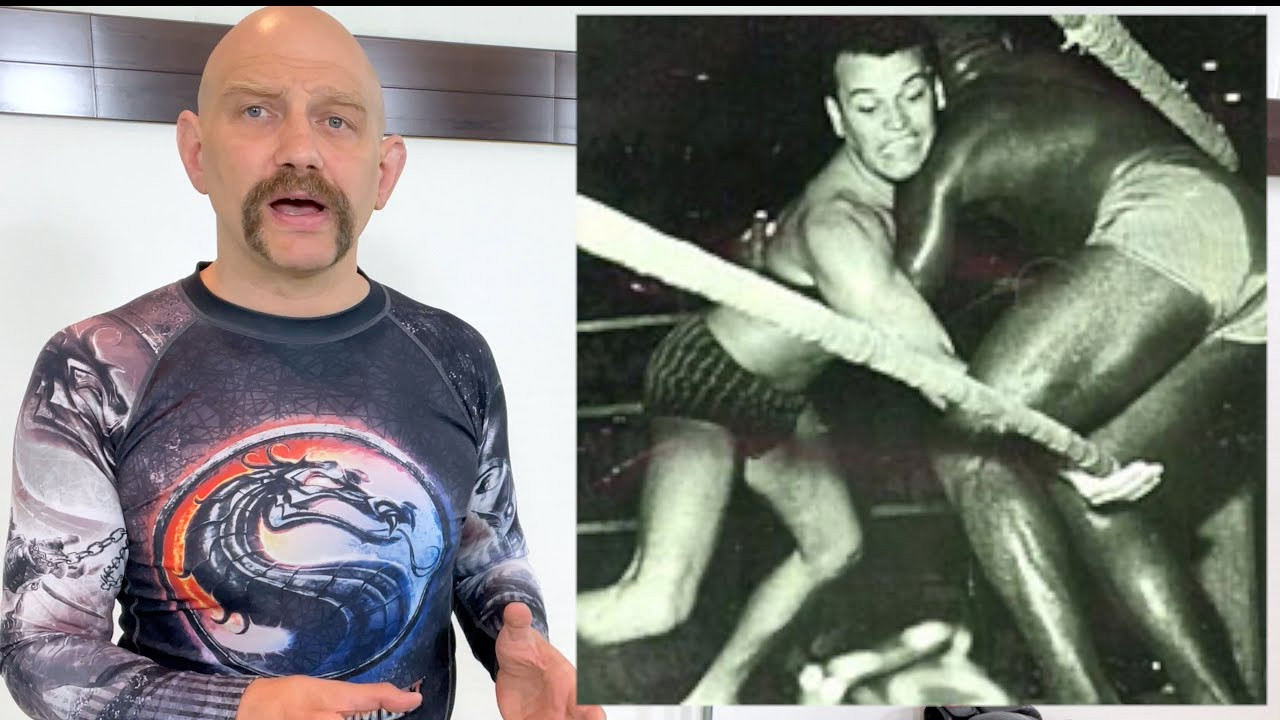Carlson Gracie

Brazilian jiu-jitsu has a long history that stretches back to the start of the twentieth century. The martial arts traditions on which it is based, primarily Japanese jujitsu and judo, date back several centuries. The growth in Brazilian jiu-jitsu’s popularity has paralleled the rise of mixed martial arts fighting, largely due to the success of the early Ultimate Fighting Championship in the 1990s.
When the UFC began, Brazilian jiu-jitsu was still not particularly well known outside of South America. This changed when Royce Gracie won three of the first four UFC tournaments. This is often considered to be when Brazilian jiu-jitsu became not only a popular martial art on its own but also a fighting style that many MMA fighters realized they needed to know if they were going to win or even survive a tournament.
Stephan Kesting, a black belt in Brazilian Jiu-Jitsu who is also an instructor for Combat Submission Wrestling, claims in the above video that Royce may have made Gracie Jiu-Jitsu more popular around the world, but that the kind of jiu-jitsu that many people learned follows the lineage of another Gracie: Carlson.
Carlson Gracie taught at least 18 vale tudo matches starting in the 1950s. Vale tudo matches are more or less the same as no holds barred matches where fighters can do virtually anything to submit or knockout their opponent. Carlson also opened jiu-jitsu to the masses, whereas before instructors had mostly taught in one-on-one, private classes. Because there were so many students of Carlson already practicing jiu-jitsu by the 1990s, they went on to dominate in early MMA organizations in Brazil, but also in international the short-lived PRIDE Fighting Championships.
Additionally, Carlson’s style could be seen as a precursor to today’s modern MMA. Kesting provides seven distinct reasons that we’ll explore below.
Reason 1 – No gi
Unlike other practitioners of Brazilian jiu-jitsu, Carlson did participate in vale tudo matches while wearing a gi. He also trained without a gi. This was a major departure from the Gracie Academy tradition. Kesting notes that even during UFC championships, Royce still wore a gi unlike jiu-jitsu fighters who participate in MMA events today.
Reason 2 – Mixing martial arts
Carlson advocated knowing how to survive on top and on bottom, and he recognized that there were some types of martial arts that could be very useful to know when you’re in those positions. True, jiu-jitsu is excellent for ground fighting, especially when you’re on your back, but he knew how to use judo, wrestling, and striking arts like boxing to make his style more formidable and to keep his opponents on their toes.
Reason 3 – Focus on takedowns
A lot of jiu-jitsu fighters spend a lot of time ground fighting, but not a lot of time practicing takedown techniques. “It’s one thing to be able to hold somebody down once you’ve fallen over,” Kesting says, “but it’s an entirely different thing to get them down to the ground in the first place.” By placing a greater emphasis on takedowns, Carlson developed a stronger all-around style.
Reason 4 – Use power
Prior to Carlson, most Gracies would prevail in vale tudo matches through submissions and technique over power. Carlson, who was bigger and stronger than other Gracies, was of the belief the “ground and pound” method is a totally valid way to win a fight. After all, a win is a win.
Reason 5 – Stay on top
Similarly, Carlson believed that it was better to be on the top than the bottom in an MMA-style fight, which ran counter to the teachings of other Graices, who preferred the bottom because it allows you to control the pace of the fight, to be more efficient, and to wear out your opponent. For Carlson, he believed that being on top gave him the opportunity to be more offensive and to use his strength to end the fight.
Reason 6 – Strength is strength
In keeping with the same line of argument, Carlson did consider strength and athleticism to be at odds with technique. They are not mutually exclusive. He believed that jiu-jitsu fighters could use things like power and agility to improve their technique. While once controversial, this is no longer a point of contention in the modern MMA, where virtually all fighters are not only extremely technically proficient; they are also extremely strong and athletic.
Reason 7 – Live sparring makes you better
The seventh reason is more about how jiu-jitsu gyms are now run more than anything else. As Kesting notes, there was very little live sparring in jiu-jitsu gyms before Carlson’s time. Most of the teaching was done by focusing on technique. Kesting relates it to katas, where a person literally goes through the motions of a technique by themselves or with a partner.
When Carlson started teaching, he would take the best fighters from his school, and then have them roll separately. Live rolling would enable them to use the techniques they had learned in a realistic setting, under pressure, with real resistance, and with different people. It ultimately made them more well-rounded fighters, and this element of live sparring is now a central part of jiu-jitsu classes around the world.

